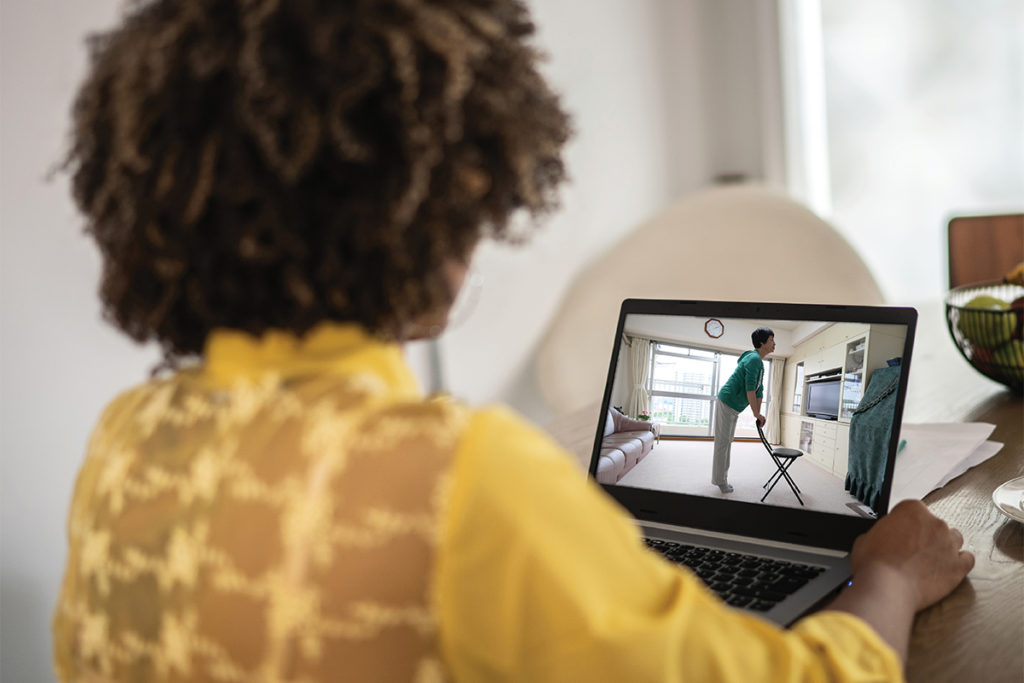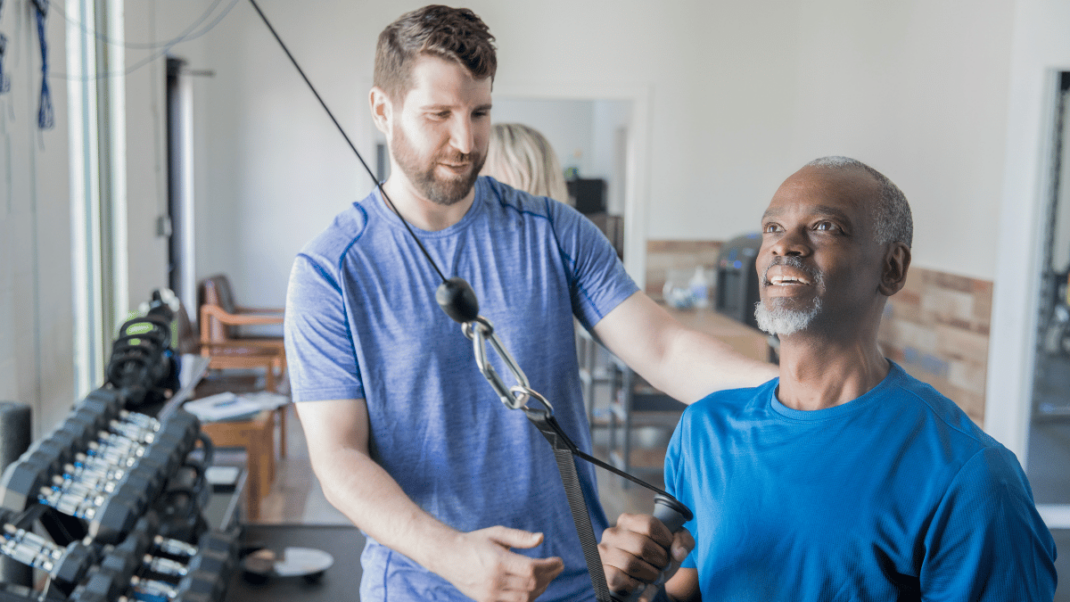Hybrid Fitness Professionals–The Best of All Worlds?
Achieving competency and success in multiple realms takes more than multiple certifications.
Back in the late 1970s and early 1980s, if you were in the fitness industry you were probably an aerobics instructor, and you likely taught some kind of high-impact classes. Sure, there were a few personal trainers working with bodybuilders, but for the most part the industry was defined by dance exercise.
Since then, many things have changed in the industry, including the title for aerobics teachers, who are now “group fitness instructors.” This name reflects a more multifaceted profession. While some instructors still prefer to teach just high-impact cardio, they are in the minority. Also, while many professionals—both longtime instructors and freshly trained newcomers—teach only group exercise classes (ranging from high-low to kickboxing to step to group strength to indoor cycling to water and so on), there’s a large group of professionals who have chosen to work in several realms simultaneously. Let’s call this group “hybrids.”
These are the people who, for various reasons, have chosen to combine roles; for example, group exercise instructor and personal trainer; club manager and online coach; university lecturer and fitness writer. There are many combinations. How and why did this trend evolve, and what does it mean for the industry? What are the advantages and disadvantages of being a multitasking hybrid? Is it necessary in today’s world?
PJ O’Clair of Hamilton, Massachusetts, was the 2008 IDEA Program Director of the Year and is a master instructor trainer for STOTT PILATES®. She presented “Hybrid Trainers—The Wave of the Future” as a preconference session at the 2009 IDEA World Fitness Convention™. “I have always been interested in variety, and I found more success when I changed things up,” she remarks. “For example, I have found that Pilates work has really helped me to be a better cyclist, and yoga has helped me to keep more balance. As a result of these personal achievements, it was natural for me to get trained in the various disciplines so I could share them with my clients and members.” O’Clair’s evolution was based on having a variety of interests and wanting to share them knowledgeably with others.
For Carrie Ekins, MA, founder of Drums Alive®, which is based in Kutzenhausen, Germany, it was a matter of necessity. “I wanted to be a university professor. After moving to Germany, I began teaching at a local club to improve my language skills. After some time, I began presenting at various conventions, and a new business [was born].” Since those days, Ekins has gone on to found and own several fitness businesses, and she travels the world presenting her programs. She has also fulfilled her original dream by being a guest lecturer at various universities.
For Fred Hoffman, MEd, 2007 IDEA Fitness Instructor of the Year and director of international services for The Club Synergy Group in Paris, taking the hybrid path was a “natural” evolution that occurred over time. “My choices and decisions have been influenced by life experiences, including moving from the United States to France many years ago,” he says.
Being an “expat” offered Hoffman many opportunities, such as being one of the first master trainers for Step ReebokSM when it was launched internationally over 20 years ago. “I quickly became friends with many of my [current] colleagues, started working with them in their respective countries and was invited to teach and present at conventions. It snowballed from there. There was no plan; it just kind of happened.” In other words, Hoffman was in the right places at the right times, and he put his education, training, contacts and skills to good use, opening up those opportunities.
In the business for more than 30 years, Aileen Sheron of Irvine, California, has gone through many evolutions—and continues to do so. “When I was younger, I taught classes to supplement my income and keep in shape. I thought it was best to get paid for teaching instead of paying for classes. When I got married and moved, the new clientele had special needs, and I realized that providing complementary services maximized my income. I received additional training, then added massage and cooking prepared meals to my repertoire. I was teaching at a couple of high-profile facilities, was chosen for several video projects and got involved in competitive aerobics. Every time I took on a different challenge, I saw new opportunities. Over time, my roles and focus have changed. I’ve cultivated a personal training business, created choreography for competitive aerobics, presented and developed programming, traveled and taught, and even produced equipment and new products. As my environment or perspective changed, so did I.”
All of this mixing and matching is bound to have some sort of impact on the industry itself. The technology aspect is one area to consider. Based in St. Petersburg, Florida, Biray Alsac, MS, describes herself as a fitness technologist who juggles group exercise and personal training—both online and off. Able to live far from most of her clientele, Alsac sends podcasts to her university-level clients, which she says “allows me to continue teaching in my area of expertise—Web-based technology and fitness.” By combining her skills and interests, she has found a niche, and she believes that colleges and universities are now more open to the idea of podcasted group activity classes because incoming students are very tech-savvy.
Alsac believes that fitness pros who can work both offline and online will have additional training tools and opportunities in the next decade, which is poised to be digitally driven. “I foresee schools and corporate wellness programs leading the way in the adoption of these types of programs because of the flexibility and low cost,” says Alsac. “In a few years podcasts will become a standard format on group exercise schedules and school curriculums.”
Looking at the future from a different perspective is Tamer Farag, chief executive officer (CEO) of the Equilibrium Club in Cairo, Egypt. Starting from an archaeology and sports background, Farag has been a personal trainer, fitness manager and CEO of several gyms, including his own, and he views the industry from an owner’s perspective. “Here in the Middle East, the industry is still young, so the level of education and organization is affected,” he says. “As an entrepreneur, this means I cannot find enough qualified, educated team members. This has led me to find solutions, so I established my own academy, which offers elementary to highly professional international courses. By doing this we help create qualified new candidates. The field is growing, and I want to expand, so if we can differentiate ourselves, we will excel.”
Having a varied skill set makes the future look exciting to O’Clair, who is also now a business owner. “Clients and members want to be stimulated and are looking for ways to avoid boredom. Those of us who have been teaching for a long time have grown into the role of hybrids as we’ve [evolved] with the needs of our clients. Professionals who want to remain busy and successful will be qualified to teach many different formats. You will thrive if you have an infectious personality, are well educated, do what you do well and customize your skill set to your demographics.”
Hoffman has a “full-circle” view of the implications for the industry. “I think [having hybrid professionals] is a good thing for the industry, in that we will be able to demonstrate the multitude of job possibilities that exist. Our profession has evolved in such a way that many of us multitask, but all under the fitness-wellness-health umbrella. This doesn’t make us any less serious or dedicated, as long as we are professional in our work and behavior.
“Hopefully, in the future, fitness professionals will be able to be successful without having to do several jobs. We are still a young industry, and as we grow and as education and salaries increase, roles will start to define themselves. This will allow people to have a full-time job in one particular area.”
Working in more than one arena has obvious financial implications, for both expenses and incomes, but there are many advantages, and a few disadvantages, to becoming a hybrid professional.
Although, to Ekins, the costs of being a hybrid are occasionally daunting, especially from the perspective of creating and marketing new programs, she is enthusiastic. “This has given me opportunities to grow and develop outside the fitness and wellness market and meet with extraordinary business owners, managers and staff. Owning your own business teaches you to take responsibility for the good and bad things that happen, and gives you [a chance] to live your passion and share it with others while making money. However, I never thought I’d be a business owner, and I wish I had taken some business courses. To be financially successful in our field takes a lot of dedication and commitment, as well as a basic understanding of business.”
As a mostly online instructor, Alsac sees an advantage in sheer numbers. “One benefit of teaching online is having higher participation rates. One of the biggest challenges [for fitness professionals] is scheduling clients or classes at prime times. Online classes can be completed on the client’s time, not on the gym or recreation center’s schedule. The downside is that it requires some technical savvy and a great time commitment to create a weekly podcast. It’s certainly not comparable to the effort required to put together a cycle play list or step routine, but it does become easier over time.”
For Hoffman, the flexibility and variety of a hybrid career helps him stay “fresh,” especially with the amount of time he spends presenting worldwide. “I love the work hours, the traveling and the chances to meet new people. Being a hybrid demonstrates our diversity, resilience and ability to multitask. Our industry doesn’t fit a traditional mold, so we can shape it any way we want and remain professional. I love not having a 9-to-5 office job, although I work hard and put in a lot of hours. I like working from home and having the freedom to make my own hours and schedule, and to accept or refuse work.”
Hoffman does experience the challenges that come with being a local instructor who travels constantly. “It can be difficult for clients and members, as they’re not always happy when I’m not there. I try to get high-quality substitutes, and I do occasionally have to cancel class, which can cause participants to become less motivated or stop coming. I don’t take on new personal training clients until I am sure they understand my work situation and schedule, as I don’t want anyone to be disappointed or angry or to have false expectations.” As another disadvantage, he also mentions the financial instability that comes with having to wait for work to come in.
In this day and age, is it an unwritten rule that you must be proficient in more than one arena in order to survive, especially if you are a group exercise instructor? “It truly depends,” says O’Clair, “on where you work and the demographics. For example, I know many instructors at the Mayo Clinic in Rochester, Minnesota, who are extremely well trained in many different disciplines and are very busy. [With a variety of skills] you can be as busy as you want. The business is out there, and hybrids can certainly thrive. You can make a career out of it by taking on additional roles, yet there will always be room for part-timers.”
Farag sees things from an employer’s point of view. “I don’t believe you have to take on more than one job or role. In the past I have promoted my best personal trainers and group exercise leaders to managerial positions, only to discover that some of them did a great job, while others could not cope. It all depended on whether they had the managerial skills, including the ability to manage budgets, teams, operations and marketing, as well as the tolerance for the challenges and obligations that come with moving up. I believe everyone has certain skills and gifts, and success lies in discovering and excelling at your particular ones.”
“I think most fitness pros find multiple ways to capitalize on their expertise. There are trainers who teach group exercise, managers who train, group exercise instructors who freelance-write. Still others endorse products or speak at conferences. Everyone complements [his or her] job with additional revenue streams,” states Alsac. Doing just one thing may not even be an option financially, or in some cases (training full-time, for example) it may lead to burnout.
“In particular, I think most group exercise instructors agree that you can’t teach classes full-time. So, yes, take on multiple roles. But that doesn’t necessarily mean putting on multiple hats. For example, a group exercise instructor who teaches in the gym as well as via podcast is technically wearing the same hat. While there are slight differences in delivery and audience, the general skills are transferable. While there may be pressure to adapt and survive in this business, the stress shouldn’t come from feeling that you need to be everything to everyone.”
Speaking from an entrepreneurial angle, Sheron stresses diversification. “Pros need either to be entrepreneurs, to be seen in the industry as an expert in a specific format or to cultivate a relationship with a corporate heavyweight. Especially for group exercise teachers, it’s important to diversify, as the mental and physical demands of teaching are very difficult to maintain over time.”
Having been in the industry long enough to remember how lightly and dismissively group fitness instructors were treated (and paid), Hoffman sees the economic aspects of trying to diversify. “I’d like to say that group exercise instructors can survive without taking on additional roles, but unfortunately even today instructors do not earn the money they rightfully deserve. The job is so physical, and there are only so many hours in a day you can, or should, teach. This can lead to a high attrition rate and a loss of good people.
“Having said that, I do believe you can be financially successful doing one job, as demonstrated by the fact that there are many full-time instructors, trainers, managers, etc., in the industry.” Hoffman remains hopeful that the future will bring higher respect and pay for the entire industry, for both single-focus and hybrid professionals.
Being a multitasking, high-performing hybrid can be a demanding, time-consuming task, and it’s not for everyone. If you do decide to add to your job titles, will you supplement what you already have and have a longer day, or take away from somewhere else and end up putting in the same amount of time? Consider the following schedules.
“I teach at three different facilities 6 days a week, mostly when my one child—who is still living at home—is at school, training for her sport or at her activities,” shares Sheron. “I limit my traveling and presenting at this time to be a supportive mom. I work on my fitness products and projects late at night or during open times in the day. When other opportunities arise, I try to schedule and prepare for them way in advance.”
For Ekins, it is about the same, with travel added: “In November I did DVD production and postproduction in Germany, attended a convention in Miami, scheduled research project meetings back in Germany, went to another convention in Thailand, spent 14–16 hours a day teaching fitness and [water]/swim classes [when I was at home], put up my holiday decorations, tended to a sick child, spent countless hours on business details, and did the cooking and cleaning. That’s basically it!”
Hoffman describes himself as disciplined, which is evident in his daily routine. “I have constant to-do lists and really have to stay on top of everything,” he says. “I have phone calls to make, e-mails to write and answer, invoices, proposals, presentations to create and revise, travel to arrange and follow-ups. I also teach a couple of classes, do a few personal training sessions and have my own workouts. It doesn’t leave a lot of time for a social life, but that’s important, so I also include that. I see friends, watch movies, go out to dinner and, most importantly, maintain a relationship with my life partner.”
Farag is even more specific. “In summer I usually start my day at 7:00 am, have a shot of honey and hot water and work out from 8:00 to 9:00 am. After that I work from 10:00 am until 8:00 or 10:00 pm, then come back home to spend some time with my family. It changes slightly in winter, but the hours put in are the same. During the week I also travel to each of our club branches to meet with the team. I spend weekends with family.”
If the life of a hybrid sounds intriguing to you, take up the challenge. If you love what you’re doing, you will make room in your life and schedule. But be sure you have your four “Ts” in line—tenacity, time, talent and training.
If you’re considering adding new tasks or titles to your fitness career, here are some pointers from a few fitness pros who have successfully juggled the demands of a multitasking lifestyle.
- Think outside the box. For example, Reebok Step and Drums Alive were both created as a result of fitness instructors “playing around” while rehabilitating from injuries.
- Work according to a plan, including a solid business plan.
- Stay focused. Don’t let yourself get distracted. For example, if you need further schooling that will take a chunk of time, keep your mind on graduation and your long-term goal, not on quick-fix opportunities that will slow you down in the long run.
- Stay informed about fitness research and trends.
- Consider the “triangle of success.” How will your choices benefit you/your colleagues, your clients/members and investors in your business?
- Think and act as if you have already achieved your goal (i.e., act in a managerial way if you want to be a manager; think like a business owner if you want to be one).
- Don’t be afraid of failure or of what others think.
- Surround yourself with people who support your goals.
- Get help and advice from experts. Find mentors.
- Take business courses, as needed.
- Hire a good attorney if you’ll be launching a business or dealing with patents, trademarks and contracts.
- Plan for lag time (the time it takes to see a profit).
- Find a niche, and hone the skills that highlight (and don’t dilute) your strengths.
- Know your market; for example, in your area with a preponderance of nursing homes, it will be hard to succeed as an athletic trainer.
- Invest in high-caliber training; cutting corners will hurt you down the line.
- Take time to think things through. What is the upside? What is the downside?
- Start slowly and don’t take on too much at once. Master being a group fitness instructor before becoming a personal trainer, and vice versa.
- Brainstorm ideas and write them down.
- Have good support materials (business cards, resumé, etc.).
What are the costs incurred in becoming a fitness hybrid? While they can vary considerably, here are a few examples. Keep in mind that each person’s needs are different, so actual costs may be higher or lower and will depend on several factors.
Certification. Costs and quality of education run the gamut, so do your research. Generally speaking, certifications approved by the National Organization for Competency Assurance (NOCA) and the National Commission for Certifying Agencies (NCCA) will be not only more expensive but more time-intensive, because the coursework is more demanding. However, bear in mind the adage “You get what you pay for.” The good news is that if you pursue a high-quality certification, your credentials will be more respected and accepted by most managers and directors.
Certification costs (personal trainer, group fitness instructor, etc.) will depend on factors such as whether you are taking a primary or secondary certification, taking just the exam or also getting study materials, taking the initial exam or a retest and so on, but generally you can expect to pay anywhere from $295 to $799, with most fees falling between $300 and $400.
Workshops. There are probably thousands of workshops to choose from, so the costs vary widely. Some are as low as $59, while others are higher, $189–$199 or more. Pick the format you would most enjoy teaching, and then price out the costs for initial training, further education, subscription services (i.e., quarterly automatic releases) or membership. The more formats you teach, the more important it is to track the costs. Also, keep in mind that some trainings or workshops will count toward continuing education credits, while others will not. Two low-cost workshops “just for fun” might not be as good an investment as one continuing education course that is approved for recertification.
Insurance. General and professional liability costs for fitness professionals can range from $170 to $272 annually, depending on the type of certification and specification (e.g., whether you specialize in mat versus equipment if you’re a Pilates instructor). Quotes for studios (under 4,000 square feet) and clubs can vary significantly.
Conventions. Staying on top of your educational game is important, and industry fitness conferences and shows should factor into your hybrid budget. As a point of reference, here’s a rundown of IDEA’s fitness events and the related investments: IDEA Personal Trainer Institute™, starting at $199; IDEA World Fitness Convention™, starting at $219; IDEA Fitness Fusion Conference™, starting at $179; and Inner IDEA® Conference, starting at $279.
Miscellaneous Items. The following costs can add up over the course of your career:
- membership or organization dues
- provider fees
- journal or magazine subscriptions
- hotel rates
- travel and dining expenses
- products and equipment purchases (for resale and personal use)
- phone and Internet charges
- consultation fees
- website maintenance charges
- university tuition fees
- workshop or training fees
- production and research costs (e.g., DVDs, online courses/groups, podcasts, equipment)
- attorney fees
Time. Money isn’t the only resource you’ll need to budget and account for. Time is just as valuable. “I have worked no fewer than 12 hours a day for over 10 years,” says Tamer Farag, CEO of Equilibrium Club in Cairo, Egypt. “When I was promoted to manager, I used to spend hours on my laptop searching, studying and developing work systems. Over a 20-year span I have obtained more than 25 certificates in health and fitness, including workshops, seminars, [continuing education] certificates, national and international certificates, management courses and long months of intensive studying.”
“Most of my ‘costs’ are production and research time,” says Biray Alsac, MS, fitness technologist in St. Petersburg, Florida. “About two-thirds of my time goes into program design and podcast production. The other third goes to research, which can [range from] finding different royalty-free music to reading about auditory learning and motivational techniques. Once people discovered my penchant for technology, I also quickly became the ‘go to’ person for troubleshooting, which takes varying amounts of time.”
Alexandra Williams, MA
Alexandra Williams has taught fitness for 17 years and has a master’s degree in agency counseling, with an emphasis on marriage and family. Her professional training has forced her to scrutinize her own value system, especially as she attempts to raise ethical children. The author wishes to thank Jack Raglin and Jim Gavin for their helpful insights and suggestions.





